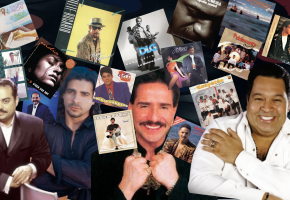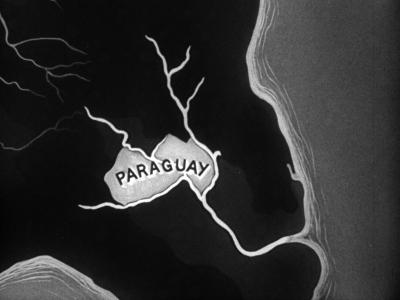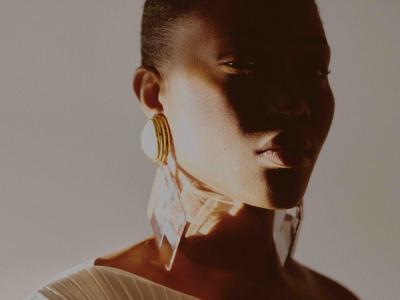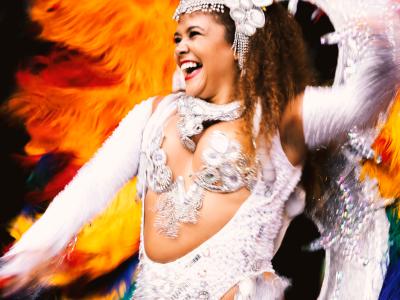Whereas many decades of experience with sequels have had audiences harbour suspicions about their motives and quality, the Orquesta Buena Vista Social Club’s Adios Tour delivers a sound and balanced performance where history and present, and musicians of all generations have their place. Animated at times and intimate others, the Cuban band’s visit to the UK brings to an end more than 16 years of touring – and a thousand shows – during which the Orquesta evolved into a dynamic and multi-generational big band that celebrates tradition at the same time it promises a healthy future for the music of the island.
Things have changed at a fast pace in Cuba lately. Two decades ago, when it all started with the album (recorded in only six days and released in 1997 to a Grammy Award the following year) the country was struggling to survive a post-Cold War barren reality without the support of the former Soviet Union. Then these bunch of aged musicians led by singer Ibrahim Ferrer (1927-2005), pianist Rubén González (1919-2003) and singer Compay Segundo (1907-2003), became the de-facto world ambassadors of Cuba’s music and culture. Songs such as ‘Chan Chan’, ‘El cuarto de Tula’ and ‘Dos gardenias’ jumped restrictions of all sorts to make millions of people worldwide realise that Cuba was far richer a country than media chronicles often suggested. Today we see in the news U.S. president Barak Obama visits Cuba with a promise to end the five-decade-long economic embargo. Next, Fidel Castro responds with his ‘Brother Obama’ missive stating Cubans will never forget the history of aggression they have endured.
At least Wim Wenders’ 1999 Buena Vista Social Club film played a part in bringing so much recognition to Cuba’s music, culture and history. On the one hand, politics and life at times of embargo and communism are intentionally, even suspiciously, avoided by the film, although that might also be what allowed the film to travel as far as it did. On the other hand, what Wenders did bring to the screen was the centrality of music in Cuban life and a colourful portrait of La Habana which dignifies its people. Politics.
The charisma and warmth of the group did the rest. All of them were still active apart from – no one less than – Ibrahim Ferrer and Rubén González González. Compay was then turning 90! Other members who played important roles back then also today take central stage: ‘Barbarito’ Torres (60, laud), Manuel ‘Guajiro’ Mirabal (83, trumpet), and Jesús ‘Aguaje’ Ramos (65, trombone). Yet, it is Eliades Ochoa (69, guitar and vocals) and Omara Portuondo (85, vocals) who have become the brightest stars.
After an opening where young Carlos Calunga shows a precious ability to double as singer and MC, cowboy-hatted Eliades Ochoa is announced. His vibrant minishow starts with ‘El carretero’ and ‘Estoy como nunca’ which keep the audience dancing in the aisles non-stop until the end of his part. The connection is such that it does not matter he breaks a string (he doesn’t replace it) or presents the songs in Spanish cheekily apologising ‘because my English is not good’. Eliades leaves the stage to a huge ovation. After a short interlude (during which the orchestra played on), Omara Portuondo comes in in a long golden dress threaded with purple. She quite literally, steal the show. Sat by the piano, played by young talent Rolando Luna, she quietly sings – almost speaks – some of the most widely known Latin American classics, such as ‘Lágrimas negras’, ‘Besame mucho’ or ‘Veinte años’.
In perfect synchronicity with the on-stage performance, the above-stage screen that has alternatively paid tribute to an old member, illustrated a song with a photo of La Habana Vieja, or reassured you about the skills of a young Buena Vista member, now amplifies Omara’s facial expressions to an intimacy that surely left a few members of the audience in tears. Yet, at 85 Omara also moves her hips more than you do, and can make you dance and wonder at the same time. In a delightful moment, she introduces to the audience her husband, ‘Papi’ Oviedo (78) who has been quietly playing the Cuban tres guitar at the front. She takes his hand and they dance together to a son before the finale arrives and the show is almost gone.
Unsurprisingly, the show ends up high with Eliades back on stage and two songs that could well turn into flames The O2 and the Millennium Dome. ‘El cuarto de Tula’ and ‘Candela’ signal the very end, fully blown, and with another standing ovation. In the epilogue, someone brings to the stage a big Cuban flag and the performers leave chanting ‘Cuba, Cuba, Cuba…’, accompanied by the audience and led by Omara Portuondo.

















